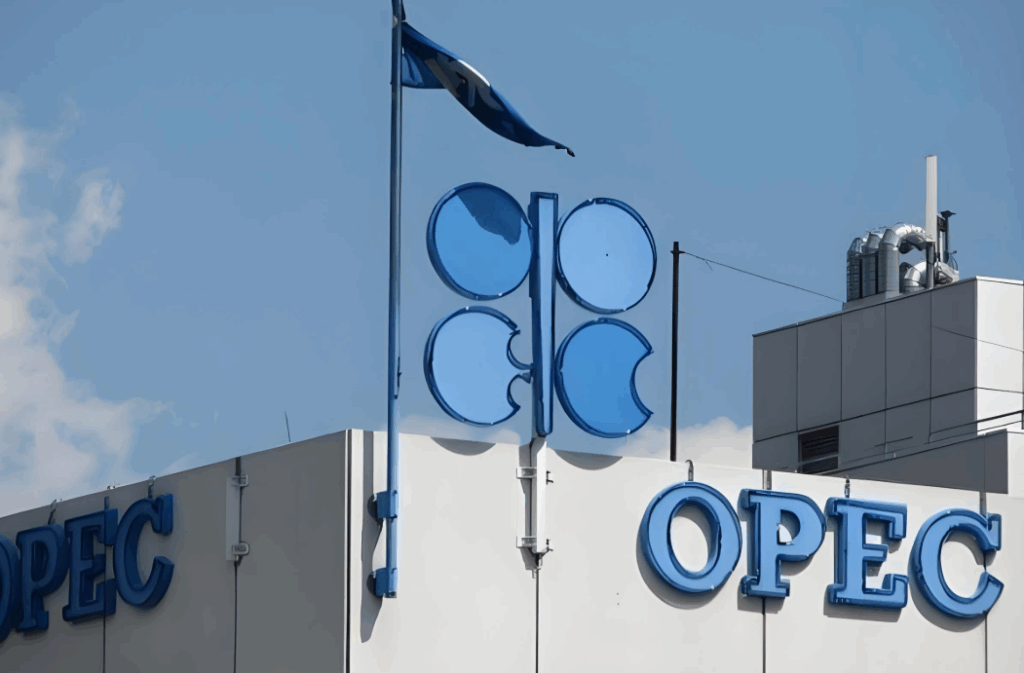
The global oil market saw a notable uptick this week after the Organization of the Petroleum Exporting Countries plus (OPEC +) announced only a modest production increase of 137,000 barrels per day (bpd) starting in November—smaller than what many market participants had anticipated.
Simultaneously, fresh sanctions imposed by the United States and the European Union targeted major Russian oil companies, including Rosneft and Lukoil, sparking concerns over downstream supply disruptions.
As a result, benchmark prices such as Brent Crude rose to approximately US $65.44 per barrel, while West Texas Intermediate (WTI) clocked around US $61.77.
Background Context
The oil market in 2025 has been under pressure from multiple angles. On the supply side, producers like Brazil, Guyana and Middle Eastern players are increasing exports, pushing global crude shipments to forecasted highs of around 41 million bpd in October. AInvest On the demand side, economic growth remains sluggish, especially in major consumers such as China, leading agencies like the International Energy Agency (IEA) to warn of an oversupplied market through mid-2026.
Prior to the recent surge, the market was bracing for a more aggressive increase from OPEC + to absorb mounting inventories. Instead, the restrained hike signals that producers may be choosing to support prices rather than flood the market—hence the upward reaction.

Why This News Matters
Implications for Commodity & Energy Markets
For commodity traders, the recent price movement is meaningful: a smaller-than-expected supply increase combined with geopolitically-driven sanctions signals that the “easy supply” cushion may be thinner than the market assumed. The immediate uptick suggests tighter fundamentals or at least heightened risk of supply disruption.
For energy stock investors and CF-derivatives desks, this environment translates into higher volatility and opportunity in oil-linked equities, futures and options. The interplay of sanctions, OPEC production decisions and macro demand dynamics means risk control is now more crucial.
Broader Macro-Economic Significance
Energy prices act as a barometer for inflation, policy and growth. A sustained increase in crude prices can raise input costs for industries, feeding into consumer inflation metrics and complicating central-bank efforts to manage rate paths. That in turn affects forex pairs, interest-rate sensitive equities and global growth sentiment.
Also, for forex markets, higher oil often strengthens commodity-linked currencies (such as CAD, AUD) while potentially putting pressure on oil-importing economies and their exchange rates.
Relevance to Investors & Traders
Retail and institutional participants should recognise that oil is no longer “drifting”: markets are reacting to structural supply-risk signals. For brokers offering CFDs on oil, volatility is rising, which means wider spreads but also more trading opportunities. For portfolio managers, the shift is a reminder that energy sector exposure deserves active monitoring, not passive “commodity index” treatment.
Our Expert Take
Strategic Outlook
We interpret this current move as a caution flag rather than full-blown rally. The fact that OPEC + opted for a modest increase suggests they want to rein in potential oversupply, but underlying demand remains weak. Thus:
- In the near term, oil prices may push toward the US $66-70/barrel range if further supply concerns or sanctions multiply.
- Medium-term, if demand remains soft and export volumes from non-OPEC sources rise as projected, we could see renewed downward pressure—perhaps toward US $50-60/barrel as some forecasts suggest.
Risks & Caveats
- Demand risk: If a global economic slowdown deepens (especially in China or Europe), then higher supply + lower demand = price pressure.
- Geopolitical upside: Conversely, a sudden disruption (e.g., Iranian export stoppage, Middle‐East shipping chokepoints) could spike prices quickly—past US $80/barrel.
- Policy interplay: Energy prices feed inflation, which may force central banks to maintain higher for longer rates. This interplay complicates trading dynamics across commodities, equities and FX.
Tactical Recommendations for Market Participants
- Traders: Use recent support/resistance levels (US $62-66 for WTI) as key zones. Consider long‐positions only with clear supply disruption catalysts; otherwise risk of retracement remains high.
- Brokers/CFD providers: Highlight the increased risk environment in your education & marketing materials. Consider hedged product offerings for clients during higher volatility.
- Portfolio managers: Treat energy exposure as an active bet. If overweight, consider using options to protect downside. If underweight, monitor for a structural shift in supply/demand balance before adding.
Looking Ahead
Key upcoming triggers to monitor:
- Next OPEC + meeting and production decision announcements.
- Sanction developments affecting major exporters (Russia, Iran).
- Demand signals: U.S. and global PMI, especially in energy-intensive sectors.
- Inventory and export data for OECD and non‐OECD regions.
If the next few data points reflect firm demand or continued supply restraint, we may see a sustained upward phase. Conversely, stronger data showing supply outpacing demand could lead to sharp correction.





